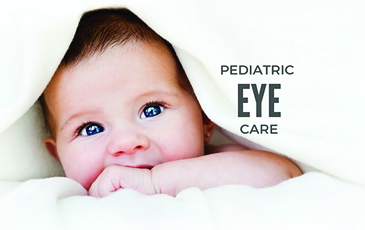"Conjunctivitis"
Conjunctivitis, sometimes referred to as “pink eye”, is an infection or inflammation of the conjunctiva, the thin, protective membrane that covers the surface of the eyeball and inner surface of the eyelids. It can be caused by bacteria, viruses and other germs that are transmitted to the eye through contaminated hands, towels, and eye makeup or extended wear contacts. It can also result from exposure to irritants such as chemicals, smoke or dust; or by pollen and other allergens. It is not uncommon for conjunctivitis to accompany a cold or flu.
Bacterial or viral conjunctivitis is contagious and tends to be prevalent in daycare centers and schools. It can spread by direct person-to-person contact, in airborne droplets that are coughed or sneezed, or from sharing makeup, towels and washcloths. Its hallmark sign is redness in the white of the eye that may be accompanied by increased tearing and/or a discharge that is watery or thick with mucus and pus and causes the eyelids to stick together. Although usually a minor problem that improves within two weeks, some types can develop into serious corneal inflammation and vision loss if not treated. If you wear contact lenses and suspect you have conjunctivitis, discontinue wearing your contacts until the condition clears; you may also need to replace your contact lenses to prevent recurrence.
There are four primary types:
Bacterial conjunctivitis is common, especially in children and contact lens wearers. It can affect one or both eyes and is usually accompanied by a heavy, yellow discharge that may cause the eyelids to stick together in the morning. Caused by a variety of bacteria, bacterial conjunctivitis is treated with antibiotic eye drops and typically resolves within 5 days. If there is concurrent inflammation of the eyelids, your optometrist may also recommend an eyelid scrub to remove bacteria and dried mucous from the lid margin.
Viral conjunctivitis is usually caused by adenoviruses, the family responsible for upper-respiratory illnesses such as colds, but can also result from herpes simplex and other viruses. This type can also affect either one or both eyes, and usually causes a lighter discharge. Although viral conjunctivitis usually produces a superficial case that clears on its own within two weeks, you should still see your eyecare provider to ensure it doesn’t lead to a more serious infection that can involve the cornea.
Antibiotics are ineffective with viral conjunctivitis. Artificial tears may be used, or your doctor may recommend a topical anti-inflammatory drop to relieve discomfort. Topical or oral anti-herpetic medications can help suppress herpes viral infections.
Allergic conjunctivitis results from a response to airborne pollen, dust, smoke, or environmental agents. Both eyes are usually affected and may itch, tear excessively and discharge a stringy mucous. You may also have other allergic reactions, such as a runny or itchy nose. Depending on the severity, you eye doctor may prescribe topical drops that are effective in relieving the itching and discomfort. A very specific kind of allergic conjunctivitis may occur in contact lens wearers, especially if they do not clean the lenses well or if the lenses are not replaced often enough. Several treatments are available for this condition, including prescription allergy drops, changing contact lens solutions to keep the lenses cleaner, and changing to lenses that are replaced more frequently such as daily disposable contacts.
Chemical conjunctivitis is caused by exposure to irritating liquids, powders, or fumes and requires immediate action. Common irritants in include chlorine, detergents, fuels, ammonia, smoke and pesticides. First, flush the eye with cold water continuously for 15 minutes, then have the eyes evaluated by your eye doctor. For minor irritants such as chlorine, often artificial tears will effectively resolve the irritation. For chemicals burns from a strong acid or base, emergency medical treatment is needed.
Conjunctivitis- Symptoms
The primary symptom is redness and inflammation in the white part of the eye. In addition, you may experience:
- • Swelling, burning and/or itching in one or both eyes
- • Excessive tearing or water
- • Blurred vision or sensitivity to light
- • A gritty feeling in your eye
An eye discharge that forms a crust, especially at night. In viral conjunctivitis, the discharge is usually thin and watery; in bacterial cases, it tends to be green or yellow and sticky.
If you suspect conjunctivitis, see a doctor soon as possible. Your eye will be examined to determine the specific cause of the inflammation, and prescribe appropriate treatment to resolve the condition.
Eye doctors primarily use a strong microscope called a biomicroscope to carefully examine the ocular surface, and may also use special dyes to evaluate the extent of damage. Other healthcare providers, such as pediatricians and urgent care physicians, do not usually have access to this diagnostic equipment, so an eye doctor is the ideal person to diagnose and treat this condition.

